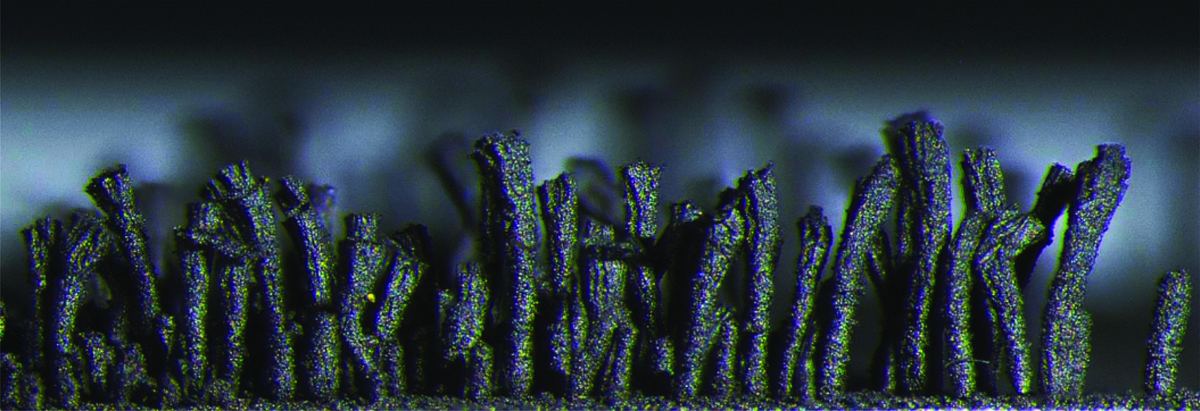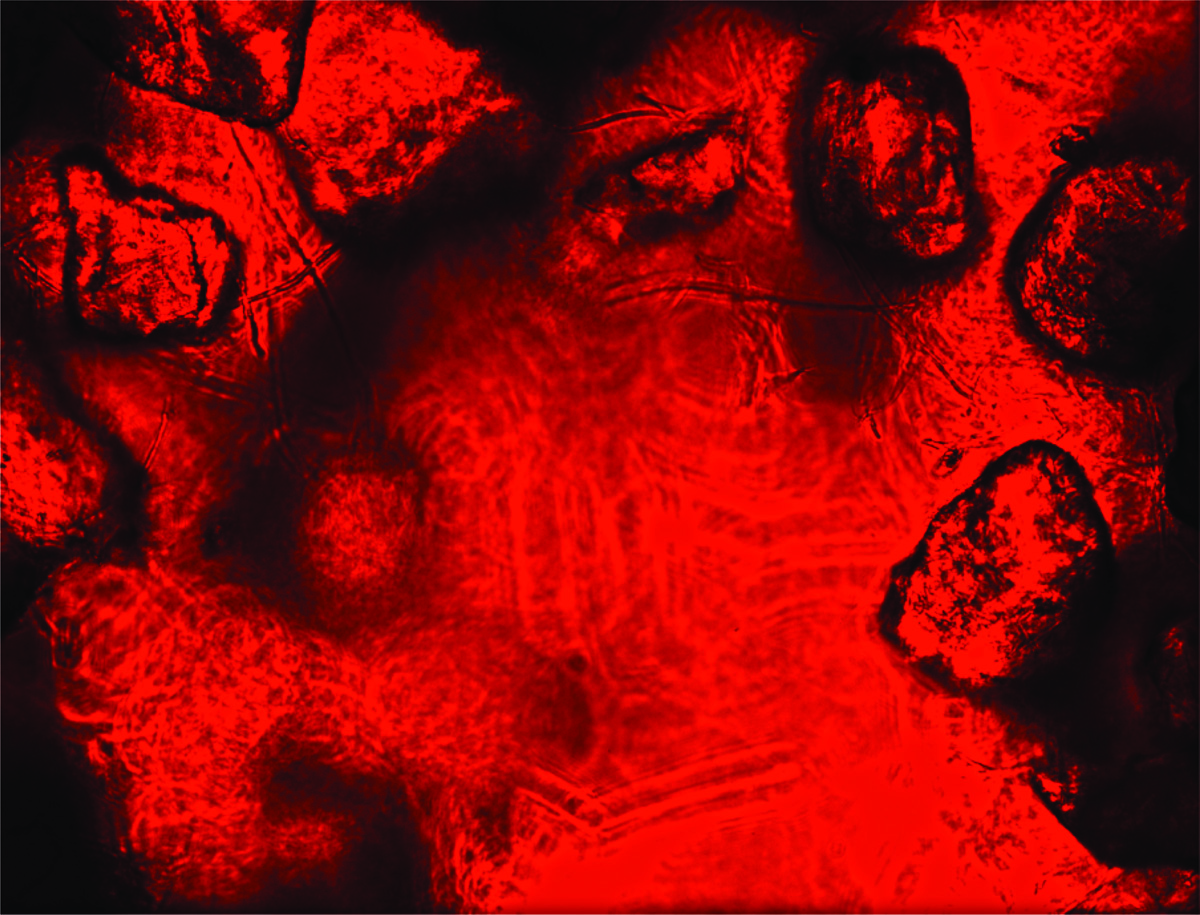The unseen, vividly visible
Last fall, the Clemson Light Imaging Facility (CLIF), which houses advanced microscopes and people with the expertise to use them, sponsored a competition for the best micrographic images produced at Clemson. Finalists from a pool of fifty-three entries were on display for voters attending a symposium held at the CLIF on October 28, 2014.
The first-place winner, Kryssia Diaz-Orellana, is pursuing a Ph.D. in chemical engineering, working with Professor Mark Roberts. Her winning micrograph (above) shows microstructures grown on mesh substrates using a new template-free method of synthesis. The tiny worm-like structures are attractive as electrodes for energy storage devices capable of delivering energy at high rates. Diaz-Orellana’s research goal is to help engineer polymer materials for the next generation of energy-storage systems.
The second-place winner, Sukhpreet Kaur, is a Ph.D. student in environmental microbiology, working with Harry Kurtz, associate professor of biological sciences. Her picture, of sandstone from a desert in Utah, reveals teeming microbial life beneath the surface of what the naked eye would see as lifeless rock. The entwining filaments of cyanobacteria visible in the micrograph are photosynthetic.
“It is fascinating to see how these microbes are able to survive under the harsh environmental conditions of the desert,” Kaur says.
Terri Bruce, assistant professor of biological sciences and the director and manager of the CLIF, provides technical guidance for micrography at Clemson.
“Pictures like the ones submitted to our micrograph competition can speak to almost anyone about the beautiful complexities that exist in the world around us,” Bruce says. “They can serve as a platform from which to launch public discussions about the new horizons in science.”




